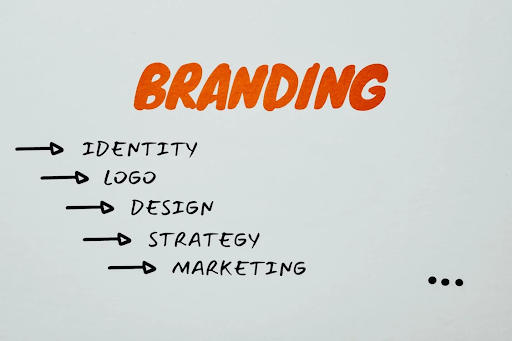Collaborating with Design Agencies: Maximizing the Impact of Your Brand Identity

In today’s competitive business landscape, establishing a strong brand identity is essential for standing out and connecting with your target audience. A well-crafted brand identity communicates your company’s values, personality, and unique selling proposition, helping to build trust and loyalty among customers.
Collaborating with design agencies can be a strategic move to ensure that your brand identity resonates effectively with your audience and leaves a lasting impression. In this article, we’ll explore the importance of collaborating with design agencies to maximize the impact of your brand identity.
Understanding the Role of Brand Identity
Before delving into the collaborative process with design agencies, it’s important to understand what brand identity entails. Brand identity encompasses the visual elements, messaging, and overall perception that people associate with your brand. This includes your logo, color palette, typography, imagery, voice, and tone.
A strong brand identity is more than just a logo; it’s a cohesive and consistent representation of your brand’s values, mission, and personality. It shapes how your audience perceives and interacts with your brand, influencing their purchasing decisions and fostering brand loyalty.
The Benefits of Collaborating with Design Agencies
Design agencies specialize in creating impactful and memorable brand identities that resonate with target audiences. By collaborating with a design agency, you can leverage their expertise, creativity, and industry insights to develop a brand identity that sets you apart from competitors and resonates with your audience. Here are some key benefits of collaborating with design agencies:
1. Expertise and Creativity
Design agencies employ skilled designers, creative directors, and strategists who specialize in brand identity design. These professionals have extensive experience working with a diverse range of clients across various industries, giving them valuable insights into effective design strategies and trends.
By tapping into the expertise and creativity of design agencies, you can benefit from fresh perspectives, innovative ideas, and cutting-edge design techniques that elevate your brand identity and differentiate you from competitors.
2. Strategic Approach
Design agencies take a strategic approach to brand identity design, starting with a thorough analysis of your brand, target audience, market positioning, and competitors. They conduct research, gather insights, and develop a clear understanding of your brand’s unique value proposition and messaging.
Based on this strategic foundation, design agencies craft a tailored brand identity that aligns with your brand’s goals, values, and personality. They consider factors such as color psychology, typography, visual hierarchy, and brand voice to create a cohesive and compelling identity that resonates with your audience.
3. Consistency and Cohesion
Consistency is key to building a strong brand identity that is recognizable and memorable. Design agencies ensure that all visual elements of your brand identity, including your logo, typography, color palette, and imagery, are cohesive and consistent across all touchpoints and channels.
Whether it’s your website, packaging, social media profiles, or marketing materials, design agencies maintain visual consistency to reinforce your brand’s identity and create a unified brand experience for your audience.
4. Scalability and Adaptability
As your business grows and evolves, your brand identity may need to adapt to new opportunities, markets, and trends. Design agencies design brand identities with scalability and adaptability in mind, ensuring that they can withstand changes and transitions without losing their core essence.
Whether you’re expanding into new markets, launching new products, or repositioning your brand, design agencies can help you evolve your brand identity while maintaining continuity and relevance.
5. Time and Resource Efficiency
Collaborating with a design agency saves you time and resources by outsourcing the complexities of brand identity design to experienced professionals. Design agencies handle every aspect of the design process, from research and conceptualization to execution and implementation, allowing you to focus on running your business.
By entrusting your brand identity to a design agency, you can streamline the design process, expedite project timelines, and achieve high-quality results that align with your brand’s objectives.
The Collaborative Process
Effective collaboration between your business and the design agency is essential to achieving a successful brand identity design. The collaborative process typically involves several key stages:
1. Discovery and Research
The collaboration begins with a discovery phase, during which the design agency gathers information about your brand, target audience, competition, and industry landscape. They conduct research, review existing brand assets, and engage in discussions with key stakeholders to gain a comprehensive understanding of your brand’s identity and objectives.
2. Strategy and Concept Development
Based on the insights gathered during the discovery phase, the design agency develops a strategic approach to your brand identity design. They define brand positioning, establish design principles, and explore creative concepts that align with your brand’s values and messaging.
The design agency presents initial concepts and ideas for your feedback, allowing you to provide input and direction to guide the design process.
3. Design Execution and Refinement
Once a concept is approved, the design agency begins the execution phase, bringing the brand identity to life through visual elements such as logos, typography, color palettes, and imagery. They create mockups and prototypes to visualize how the brand identity will appear across various touchpoints and channels.
Throughout the design process, the design agency collaborates closely with your team, soliciting feedback and making refinements based on your input. This iterative approach ensures that the final brand identity reflects your brand’s vision and resonates with your audience.
4. Implementation and Rollout
Once the brand identity design is finalized, the design agency assists with the implementation and rollout across all relevant platforms and touchpoints. They provide guidance on how to apply the brand identity consistently across print and digital assets, ensuring a cohesive and unified brand experience for your audience.
The design agency may also develop brand guidelines or style guides to document the visual elements and usage rules of the brand identity, providing a reference for internal and external stakeholders.
5. Evaluation and Optimization
After the brand identity is implemented, it’s important to evaluate its effectiveness and impact over time. The design agency may conduct user testing, surveys, or analytics analysis to gather feedback and insights from your audience.
Based on the findings, the design agency can recommend optimizations or refinements to enhance the brand identity and address any areas for improvement.
Conclusion
Collaborating with design agencies offers numerous benefits for businesses seeking to create impactful and memorable brand identities. By leveraging the expertise, creativity, and strategic insights of design professionals, businesses can develop brand identities that resonate with their audience, differentiate them from competitors, and foster long-term brand loyalty.
Effective collaboration between businesses and design agencies involves clear communication, mutual respect, and a shared commitment to achieving the brand’s objectives. By working together closely throughout the design process, businesses and design agencies can maximize the impact of the brand identity and set the stage for success in the marketplace.



